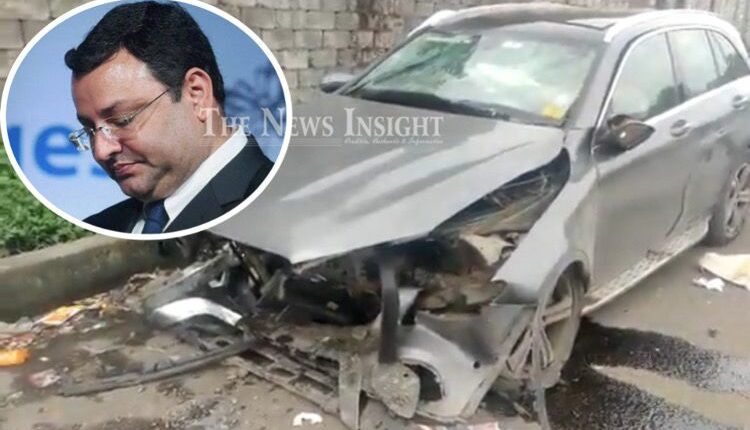Key Lessons to be learnt from Cyrus Mistry Death
Cyrus, 54, died Sunday while driving between Ahmedabad and Mumbai after the car he was in hit a bulkhead on a bridge.
TNI Bureau: Former Tata Group chairman Cyrus Mistry’s sudden demise has removed curtains from the high numbers of fatalities that Indian roads witness every year.
Cyrus, 54, died Sunday while driving between Ahmedabad and Mumbai after the car he was in hit a bulkhead on a bridge. Images circulating on social media showed skid marks from a Mercedes skidding off the road right next to a pothole. Rear airbags did not deploy.
According to police, Mistry and co-driver Jahangir Pandole, who died in the accident, were in the back seat of a Mercedes car at the time of the accident and were not wearing their seat belts.
According to the National Crime Records Bureau (NCRB), there are around 1.5 lakh deaths on India’s roads each year, with a third of them on national highways.
According to the data, over the past five years, traffic accidents increased from 4,45,730 in 2017 to 4,03,116 in 2021, while the number of fatalities in these accidents increased from 1,50,093 to 1,55,622 over the same period.
While the number of accidents on federal roads in 2017 was 1,30,942, up to 50,859 people lost their lives.
While the number of accidents on National Highways fell to 1,22,204 in 2021, the number of fatalities rose to 53,615.
According to the data, with the exception of the 2020 pandemic year, which saw long lockdown periods, accident and fatality data moved consistently at 4.4 and 1.5 lakh respectively between 2017 and 2021.
In 2020, accident figures fell to around 3.5 lakh while fatalities fell to 1.33 lakh.
Accidents and fatalities on the National Highways also saw a decrease in 2020 with 1,06,933 accidents with 45,275 fatalities. In all other years of the period, accidents amounted to about 1.28 lakh and deaths to about 50,000.
As the length of National Highways increases each year, starting in 2018, the NCRB also began collecting data on fatalities per 100 km of road. According to this, the number of road deaths per 100 km of federal roads was 44 in 2018. In 2021 the number fell slightly to 40.
Support Independent Journalism? Keep us live.
According to the NCRB, most traffic accidents and fatalities occur between 6:00 p.m. and 6:00 p.m. on average each year. and 9 p.m. on a given day and in the months of January and December of a given year. Sources said this was largely due to poor visibility during those periods.
Most traffic accidents every year are attributed to careless driving and speeding. Speeding caused 87,000 deaths, accounting for more than half of all deaths, while dangerous and careless driving was cited as the cause of 42,000 deaths in the latest NCRB report.
As in previous years, two-wheelers had the most fatalities in 2021 (44.5%), while buses accounted for 3% of accident fatalities in 2021.
The largest increase in the number of traffic accidents from 2020 to 2021 was reported in Tamil Nadu (from 46,443 to 57,090), followed by Madhya Pradesh (from 43,360 to 49,493), Uttar Pradesh (from 30,593 to 36,509), Maharashtra (from 24,908). to 30,086) and Kerala (from 27,998 to 33,051).
These figures highlight the use of seat belts and the apathetic attitude towards their use in India.
According to a June report by the World Health Organization (WHO), seat belts can reduce deaths and serious injuries by 25 percent to passengers in the back seat of a car.
In a collision, an unbelted rear passenger can be thrown forward with great force, injuring or killing the front occupant as well. This phenomenon is made clear by the crash test dummies in the video. If a seat belt is not fastened, a passenger can hit hard surfaces and even be thrown from a speeding car if a door opens, resulting in life-threatening injuries.
In particular, in India, seat belts are compulsory for rear seat passengers.
Central Motor Vehicle Rules (CMVR) require all passengers in forward-facing seats, whether front or rear, to wear seat belts.
According to the law, driving without a seat belt can now be punished with a fine of up to Rs 1,000, which used to be just Rs 100. In addition, the traffic police can also confiscate the vehicle or revoke the driver’s license. However, the penalty may vary from state to state.
After the death of Cyrus Mistry in a car accident, Anand Mahindra promised that he would always wear a seat belt, even when sitting in the back seat of a vehicle.


Comments are closed.